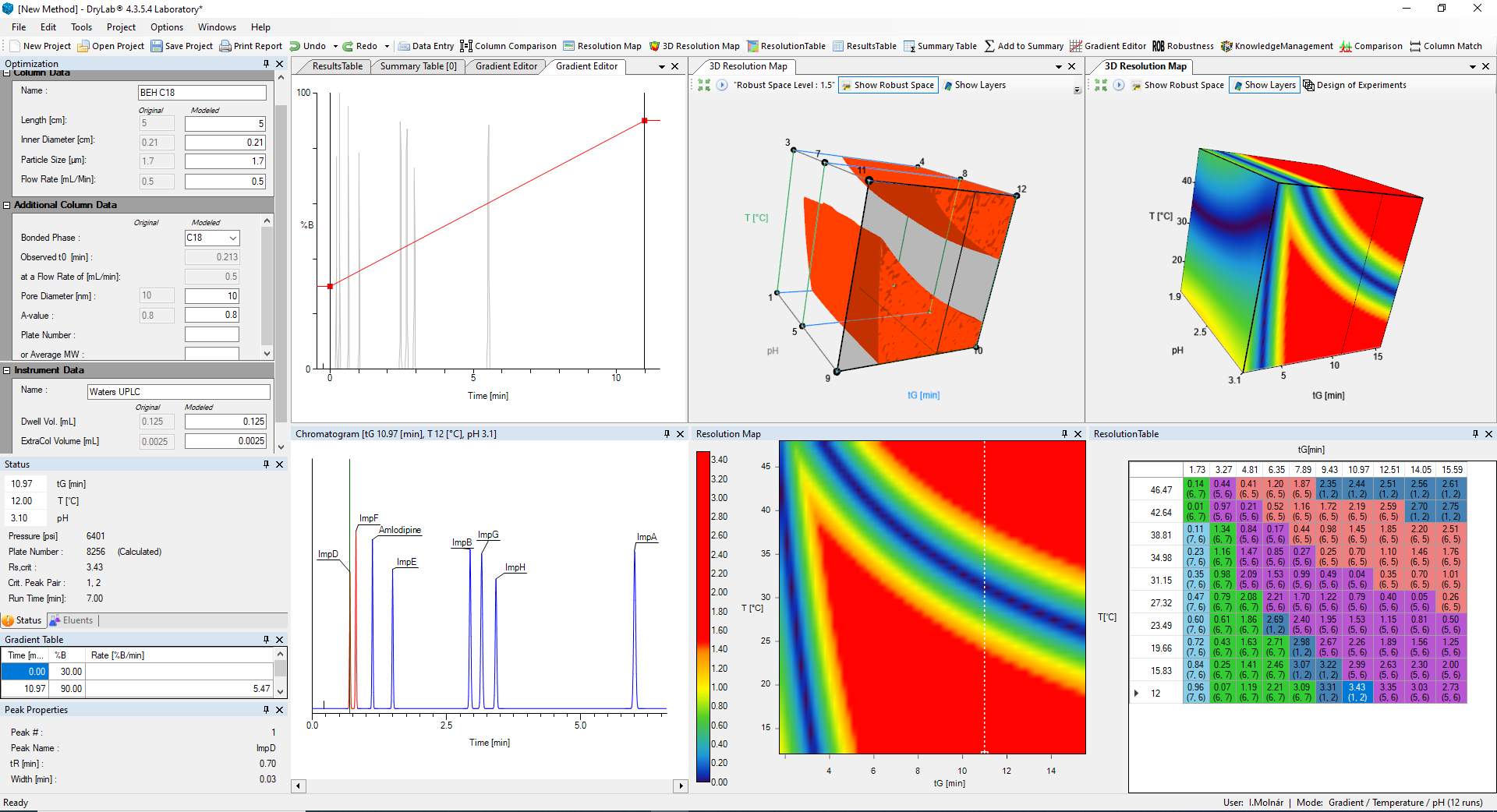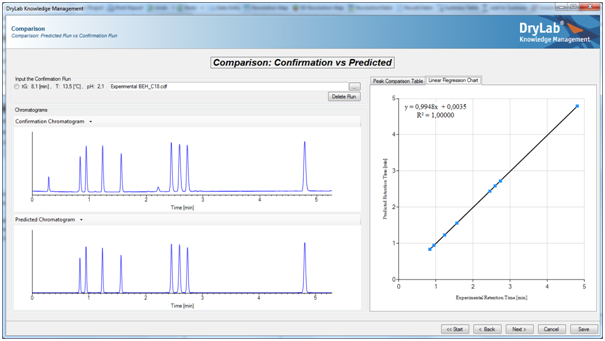By Molnár-Institute for…
Speeding HPLC business process development and easing method transfer with DryLab®4 from MOLNÁR-INSTITUTE
Molnár-Institute’s proprietary software suite, DryLab®4, provides analytical scientists with the tools needed to challenge analytical methods and aggressively seek out impurities throughout process development. DryLab4 can be central to such workflows by automating analysis of samples and uncovering impurities previously hidden, when using traditional chemistry methods. DryLab has been used to develop new and improved HPLC/UHPLC workflows based on QbD methodology and in business process development easing seamless method transfer.
DryLab automates the repetitive tasks required in good chromatographic praxis to overcome many fundamental HPLC issues. For example, use of standardized recipes or eluents can eliminate contaminations during the elution process. These work equally well with high- or low-pressure mixing, easing method transfers between different HPLC hardware platforms.
Process development
Compared with laboratory methods, DryLab®4 can predict chromatograms more effectively in silico by widening the range of experimental conditions, allowing researchers to model separations by simultaneously varying pH, temperature, buffer concentration, ternary eluent composition (tC), flow rate and other method parameters.
The systematic in silico HPLC workflow of DryLab provides a state-of-the-art tool to support process scientists in high or ultra-high-performance liquid chromatography (HPLC/UHPLC) method development, optimization, troubleshooting, robustness testing, and training.
These improved workflows show, how integration of IT and analytics can enhance capabilities for the researchers, while simultaneously increasing productivity and reducing cost.
Process development workflow
At the very outset of process development work, it is important to develop a QbD HPLC method to assess quality of intermediates and APIs being produced. HPLC method must evolve in harmony with the synthetic process and changes in impurity profiles.
HPLC method development can be a time-consuming process, if it is done by linear trial-and-error based on one column or eluent at a time. It also runs the risk of method development being terminated prematurely based on too few results. DryLab speeds the process by allowing samples to be screened using pre-defined column sets that vary selectivity in combination with mobile phases of differing pH and solvent composition. These complementary screening conditions can reduce development times by revealing true HPLC conditions more clearly.
DryLab®4 provides a platform for unique high-performance liquid chromatographic workflows specifically designed for the rigors of process development that integrates commercially available HPLC hardware with in silico software manipulation and analysis to automatically and systematically screen samples using defined sets of columns and eluents to identify impurities. The workflow platform can be used both to interrogate existing HPLC methods or to develop new ones.
Advanced modelling functions
DryLab includes a number of advanced functions to increase the value of HPLC models.
The DryLab Gradient Editor provides a powerful tool for optimizing methods via gradient elution, modifying gradient time, changing start and end %B, and adding gradient steps. This process allows DryLab to find the best linear or step gradient automatically if desired, by not only reducing run times, but also dramatically increasing resolution between critical peak pairs.
The ColumnMatch tool can reveal hidden peaks by allowing visual comparison between different columns, taking into account hydrophobicity, steric selectivity and other contributions.
Peak Tracking identification and assignment of peaks from a set of systematic experiments offers an important first step in reducing complexity in controlling the HPLC method development process by preparing an organized and systematic color-coded peak table, within which researchers can reorder and turn peak positions, separate double and triple peaks.
DryLab’s 3D Cube Module extends the 2D resolution map into a Method Operable Design Region (MODR) comprised of three parameters in which researcher can visualize multifactorial variabilities for robustness. This 3D module can also incorporate up to eight other parameters to generate exponentially more conditions in which to model method and show how multiple changes affect separation resolution and selectivity (see Resources).
The Robustness Module tests the tolerance limits of selected working points by computing the number of Out-of-Specification (OoS) results that occur, given small fluctuations in method parameters, evaluating variable conditions such as gradient time, temperature, pH or ternary composition, flow rate and start/end gradient points.
Easing method transfer
The DryLab-enabled ability to predict, how changes in method parameters will affect separations provides researchers with enhanced options in method optimization and method transfer.
The Knowledge Management Module of DryLab provides more than a reporting tool for documenting and archiving a method. It also supports method development based on Quality by Design (QbD) guidelines to ensure, that method conforms to standards, automatically generating Analytical Method Summary for sign off. This assists laboratories in achieving GMP compliance, along with easier and more effective collaboration between departments, supporting analytical method transfer during development and manufacturing.
DryLab thus offers considerable speed, efficiency, and cost advantages to any organization using HPLC/UHPLC to optimize complex samples and develop processes.
Resources
Click on DryLab simulation to see video



















